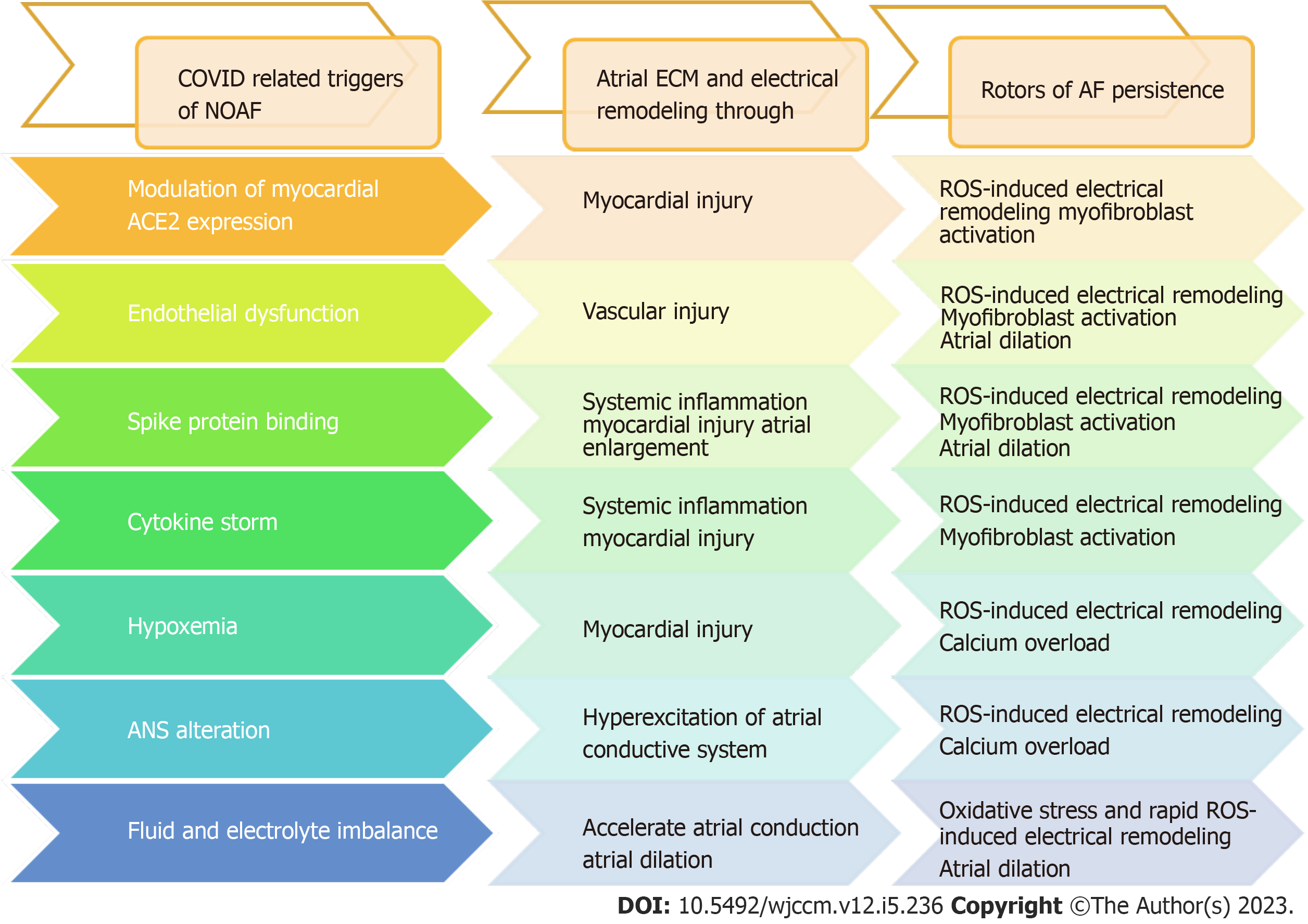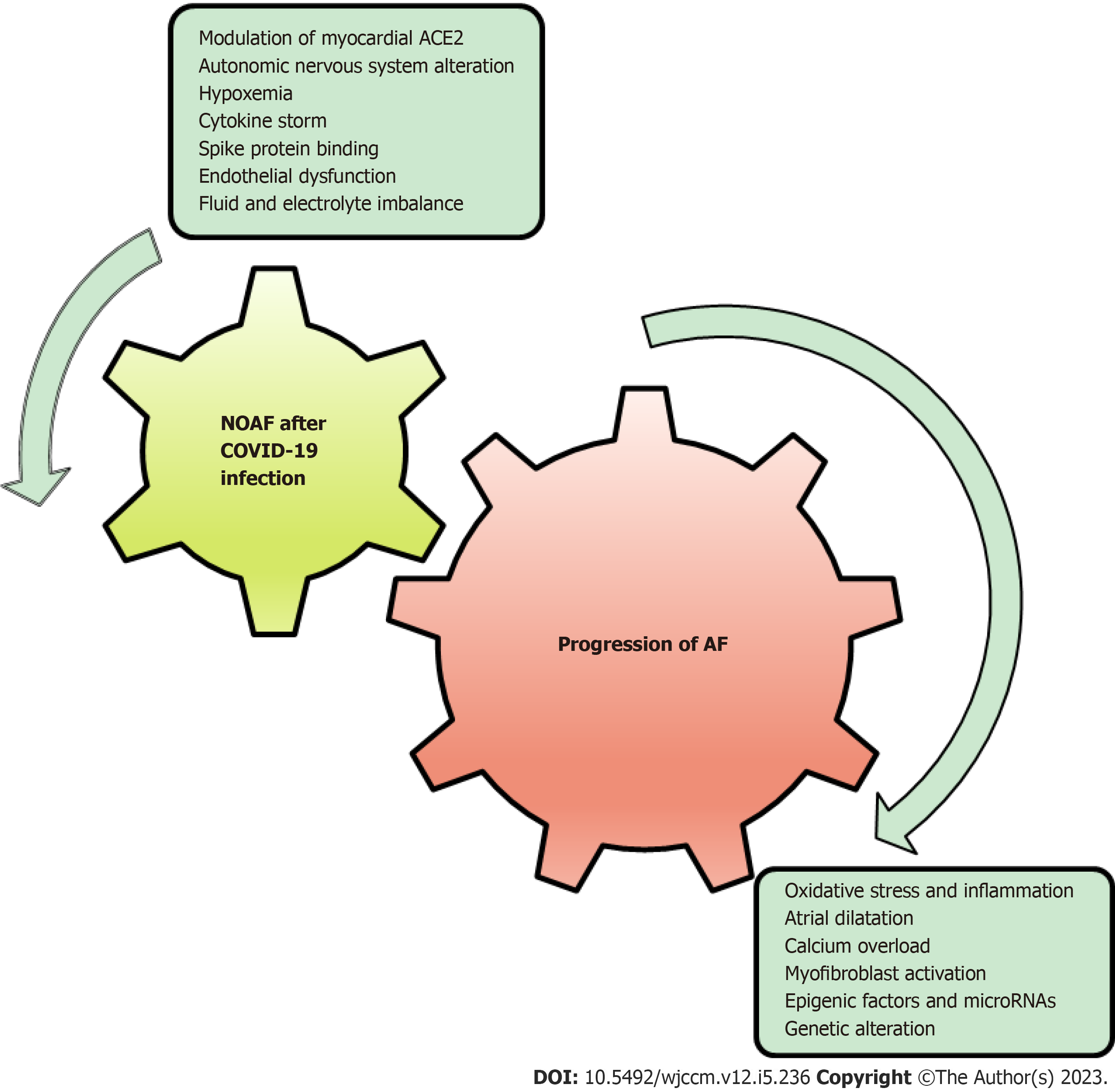Copyright
©The Author(s) 2023.
World J Crit Care Med. Dec 9, 2023; 12(5): 236-247
Published online Dec 9, 2023. doi: 10.5492/wjccm.v12.i5.236
Published online Dec 9, 2023. doi: 10.5492/wjccm.v12.i5.236
Figure 1 Comparing available studies on new-onset atrial fibrillation pathophysiology in coronavirus disease 2019 patients and rotors of atrial fibrillation persistence (including oxidative stress, calcium overload, atrial dilation, micro-RNA, inflammation, and myofibroblast activation.
COVID: Coronavirus disease; ECM: Extracellular matrix; NOAF: New-onset atrial fibrillation; AF: Atrial fibrillation; ROS: Reactive oxygen species; ACE2: Angiotensin-converting enzyme-2; ANS: Autonomic nervous system.
Figure 2 Long-term studies needed to assess progression from coronavirus disease 2019-related new-onset atrial fibrillation to more sustained forms of atrial fibrillation.
COVID-19: Coronavirus disease 2019; NOAF: New-onset atrial fibrillation; ACE2: Angiotensin-converting enzyme-2; AF: Atrial fibrillation.
- Citation: Talaei F, Banga A, Pursell A, Gage A, Pallipamu N, Seri AR, Adhikari R, Kashyap R, Surani S. New-onset atrial fibrillation among COVID-19 patients: A narrative review. World J Crit Care Med 2023; 12(5): 236-247
- URL: https://www.wjgnet.com/2220-3141/full/v12/i5/236.htm
- DOI: https://dx.doi.org/10.5492/wjccm.v12.i5.236










